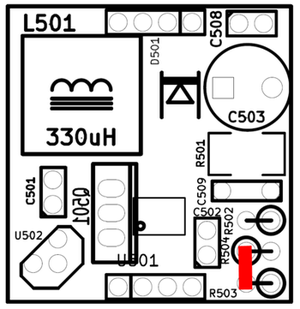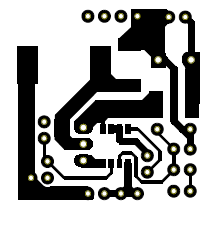gemini86
Well-known member
You have to have the images hosted elsewhere like Imgur.com then add them in as image tags.
100WChris said:
frequency-plot with old tubes i had lying around (made with fuzzmeasure).
That´s because i aimed for a truly transparent sounding unit 8)Tubes so old, they're invisible!
100WChris said:HV board with Cap installed across R503 and R504
put the cap across R503 and R502 as shown in pictures by bruce on side 3 of this thread, reply 45.
Might solve your hum-problem.
Cheers
Chris
tzman said:100WChris said:HV board with Cap installed across R503 and R504
put the cap across R503 and R502 as shown in pictures by bruce on side 3 of this thread, reply 45.
Might solve your hum-problem.
Cheers
Chris
I just read the thread in preparation to my built and I think there's some confusing information about how to do the Rodney Cap Mod.
Reading the info in the thread I assume you have to put the cap across R503, R504. So looking at the schematic, this would mean to solder one end to R503 and the other end to R502. Just a Chris explained in my quote.
The picture at the start of this thread however has a red bar from R503 to R504. It's actually a picture from post 258 where Benny is describing how NOT to solder the cap.
Am I right in thinking that the picture in the first thread is bit confusing and that the right way to do the Rodney Cap is how Chris describes it in my quote?
I'm really looking forward to building this unit!
Thanks!
Am I right in thinking that the picture in the first thread is bit confusing and that the right way to do the Rodney Cap is how Chris describes it in my quote?


we have great sounding preamps! when it takes a bandaid to work... give me a bandaidis a bandaid to fix the instability problem
100WChris said:we have great sounding preamps! when it takes a bandaid to work... give me a bandaid
gemini86 said:Hope that makes more sense.
gemini86 said:Okay, what you're trying to do with the cap mod is to bypass the feedback pin to ground. Here's the pic from the 1st post:

This picture is illustrating what pads to connect the cap across. If you put a resistor into R504's position the way the silk screen shows, then it's going to be hard to solder the cap to that point, so that's why some have made the mistake of essentially soldering the cap across R503 only. The next best place is to solder to the leg of R502, which is up in the air. That leg is connected to the pad you want to be connected to.
Here's a look at the copper layer, looking from top down:

Hope that makes more sense.
***by the way, I received a PM from a fellow DIYer who has mentioned, and I thought it was clear, but again maybe it's not, that this is a bandaid to fix the instability problem with the converter. The feedback network is not an ideal layout and is picking up current noise from the ground, likely because there's a huge ground plane right under it on the bottom of the pcb. If I were a more experienced man, I wouldn't have designed it this way. Live and learn***
gunpoint recording said:also, I can confirm the mouser cart i posted in post 234 seems correct, except my electrolytic at c11 was too big.
Input xfmr options
A262A2E $17.64 http://www.newark.com/oep-oxford-electrical-products/a262a2e/audio-frequency-transformer/dp/02M8356
CM-75101APC
LL1538 $82 each http://www.kandkaudio.com/prices.html
EA2622 $45 each http://classicapi.com/catalog/product_info.php?products_id=80
JT-110K-HPC $78.51ea http://www.jensen-transformers.com/prices.html
LL1576 $82 each http://www.kandkaudio.com/prices.html
LL1578 $82 each http://www.kandkaudio.com/prices.html
Output:
A262A3E $17.64 http://www.newark.com/oep-oxford-electrical-products/a262a3e/audio-frequency-transformer/dp/24M0686
LL5402 $65 each http://www.kandkaudio.com/prices.html